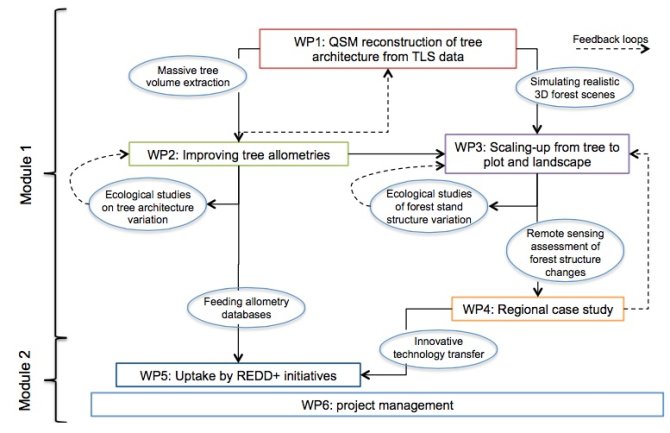Projekt
Combining remote sensing and 3D forest modelling to improve tropical forests monitoring of greenhouse gases emissions – 3DForMod
3DForMod focuses on emissions resulting from tropical forest degradation. Deforestation and forest degradation is considered the second largest source of global anthropogenic GHG emissions. While there is a pressing need to go beyond satellite-based land-use and land-cover change (LULCC) survey to accurately monitor carbon stocks in the tropics, there is no operational integrated framework to achieve this goal. In particular, much uncertainty comes from the difficult evaluation of forest degradation impact, which does not entail forest conversion.
Our project aims at integrating advances in 3D forest modelling and very-high-resolution remote sensing technology to improve monitoring of forest aboveground biomass, especially in tropical countries that have signed the Paris Agreement. The final goal is to supply stakeholders and decision-makers with reliable and accessible information on vegetation carbon stocks in forest territories along with simple predictive, GIS-based models on the consequences of forest degradation in terms of GHG emissions.
The consortium of partners allows covering all steps that need to be considered to rigorously scale-up aboveground carbon estimates from tree to forest plot and region. We shall combine: advanced Terrestrial Laser Scanning technology to derive massive tree volume data (WP1) for allometry development without employing destructive harvesting (WP2); 3D forest modelling to link remote sensing information to ground data in order to improve capability of high-resolution satellite data to estimate biomass (WP3) and detect changes and emissions related to forest degradation for regional up-scaling (WP4); collaboration with developing country forest monitoring agencies for integrating project results into their national REDD+ monitoring system and related capacity building with international partners (WP5).
